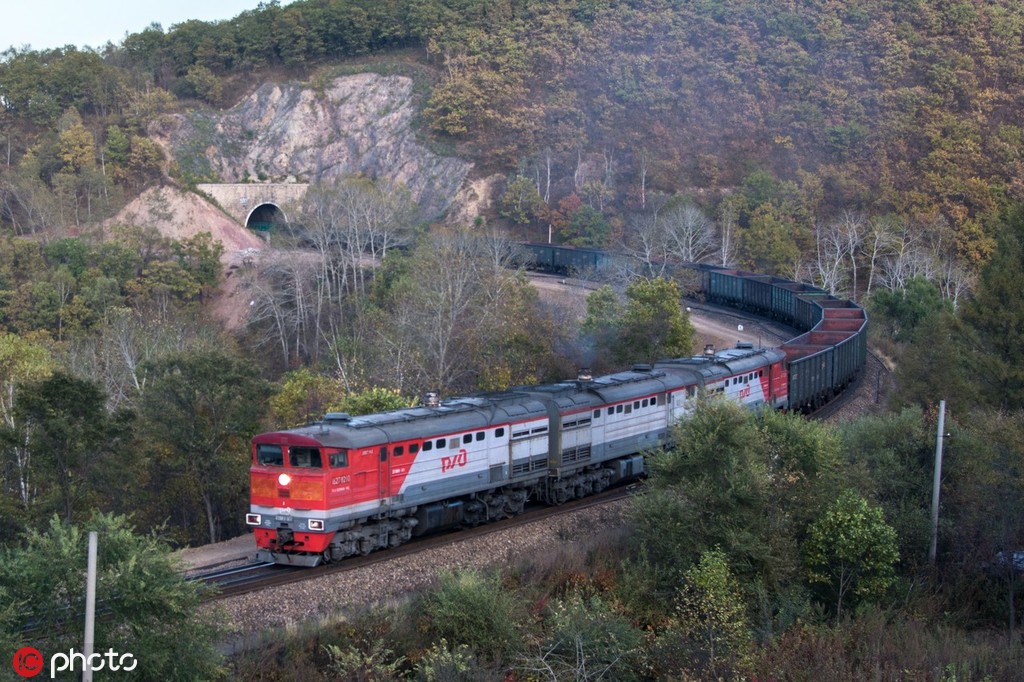
The northeastern province of Heilongjiang will take full advantage of the Belt and Road Initiative and its own geographical position-with its far north bordering Russia-to form a new pattern of all-around opening-up with Russia and Northeast Asia.
That will further highlight the status of China's biggest province in cooperation with Russia, according to the provincial 14th Five-Year Plan (2021-25) for Economic and Social Development and a policy paper called Long-Range Objectives Through to the Year 2035.
The province shares a border of almost 3,000 kilometers with the Russian regions of Primorsky Kray, Khabarovskiy Kray, the Jewish Autonomous Oblast, Amur Oblast and Lake Baikal.
Trade between Heilongjiang and Russia rose dramatically during the period of the country's 13th Five-Year Plan (2016-20), accounting for 20 percent of China's trade volume with Russia and 60 percent of the province's total imports and exports.
In August 2019, the Heilongjiang Pilot Free Trade Zone, China's northernmost FTZ, was officially established.
Harbin, the provincial capital, became one of the three areas within the zone, along with the cities of Suifenhe and Heihe.
In 2014, Harbin Bank established an online payment platform for Sino-Russia cross-border e-commerce, the first such platform in China. It provides more than 10 payment and settlement methods, with over 60 different currencies, solving the problems of difficult online settlement, the high logistics cost for e-commerce exports to Russia and lengthy payment processes.
By the end of last year, the platform had dealt with more than 44 million transactions, with a total settlement amount of 15 billion yuan ($2.33 billion), and provided services for more than 6,000 cross-border e-commerce websites.
The border city of Heihe has been doing business with Russia for more than 130 years.
Heihe port, as a national first-class facility, plays an important role in China's economic and trade cooperation with Russia, according to the city government.
In 2011, Heihe and Russia's Amur Oblast started cooperative projects in sectors including transportation, resources, culture and tourism.
The first road bridge connecting China and Russia has been completed and prepared for traffic.
It spans 1,284 meters across the Heilong River, known as the Amur River in Russia, and connects Heihe with the Russian city of Nizhneleninskoye.
Construction began in December 2016. When it opens, the passenger flow between the two cities is expected to reach 1.4 million per year and the freight volume will reach 3 million metric tons.
Meanwhile, a cross-border cableway that will span the river is also under construction.
The project, which will link Heihe and Blagoveshchensk in Amur Oblast, started simultaneously on both sides of the river in July, and will be the world's first cross-border cableway when it is completed.
The facility, with total investment of 571 million yuan, is designed to be 972 meters long, according to the Heihe government. It is expected to be completed next year and have an annual transportation capacity of 2.5 million people.
Currently, visitors take ferries or hovercraft to cross the border on warmer days, while buses use a floating bridge built on the frozen river during winter.
"I have been to Blagoveshchensk several times," said Zhang Xun, a civil servant in Heihe. "The cableway will provide tourists with a new option, and I am looking forward to enjoying the wonderful view from up high."
About 190 kilometers from Vladivostok, one of the largest cities in Russia's Far East, Suifenhe has 150,000 residents. It is the biggest Sino-Russian trade hub in Heilongjiang.
On Aug 9, 2011, Harbin Customs officially approved the establishment of a free trade market in Suifenhe to promote cross-border trade in the city.
Under the policy, Suifenhe residents can buy duty-free commodities to the value of 8,000 yuan per day.
By the end of 2019, the city's free trade zone with Russia was open to businesses from 14 more countries, including Mongolia and the Republic of Korea, the city government said.
Last year, more than 174,000 tons of commodities were imported to the Suifenhe Free Trade Zone with a total value of 800 million yuan, the local government said.
The opening-up of the city has also attracted many Russians, who have started businesses.
In the autumn of 2016, Igor Gorshkov quit his job in Moscow and opened a Russian sausage factory in Suifenhe with a friend.
"During my first visit to Suifenhe in the summer of 2016, I found a favorable business environment and huge market potential for my products," the 53-year-old said.
"The city government established the 'Russian Startup Street' and provided premises free for three years, which greatly attracted us."
In May 2018, Gorshkov expanded his factory's area with investment from a Chinese entrepreneur.
Now, his products are sold in many parts of China, including the provinces of Jilin, Liaoning, Shandong and Guangdong.
"I feel proud to bring traditional Russian sausages to Suifenhe, which helps to spread Russian food culture," Gorshkov said.
"We believe there will be more China-Russia partners in the future and better cooperation."
